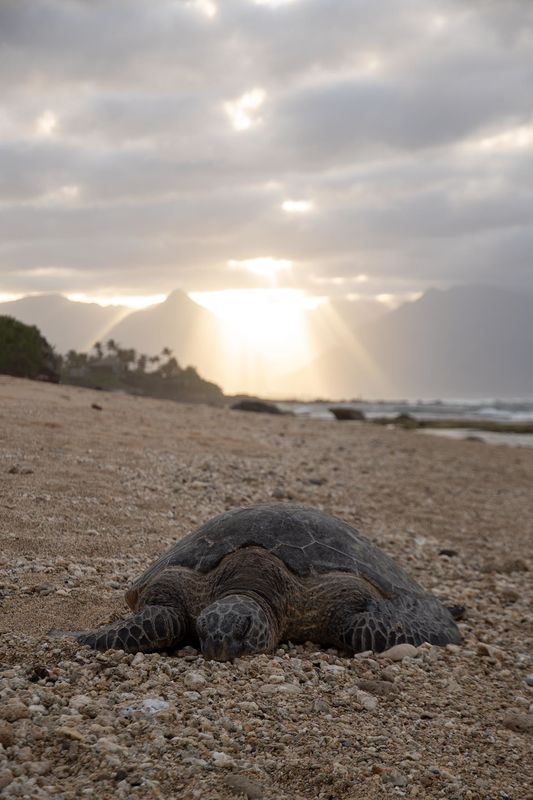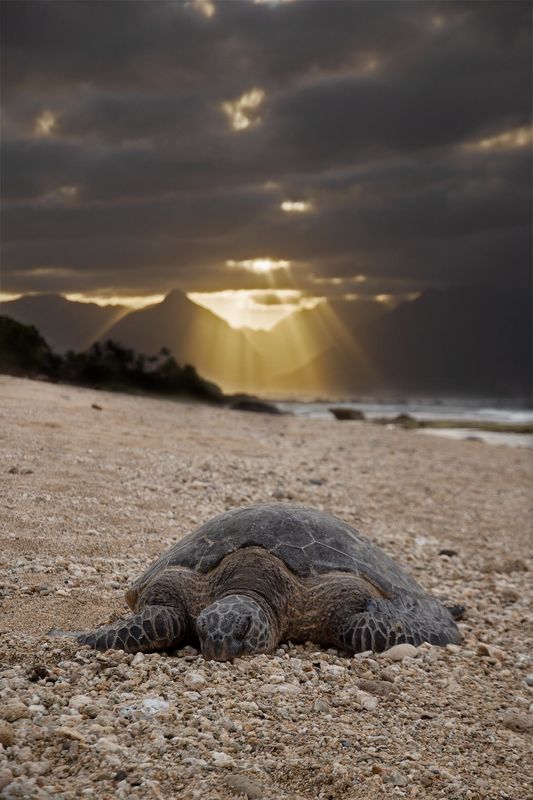ND Graduated Filter hits
May 16, 2021 04:05:41 #
JD750 wrote:
Isn’t that where the GND filter comes in? It blocks some of the light from the sky and reduces the dynamic range of the scene to that of the sensor.
Yes, that is the principle. The problem comes that it is a real brute force solution. There is a light part and a dark part and an area of transition. The transition area is always a straight line. It works reasonably well if the light part of the image (generally the sky) is well defined and divided by a flat horizon from the foreground and right in the middle of the frame. But generally, other things are happening in the image. Sometimes the division between light and dark is high in the frame or low in the frame, requiring an oversized filter capable of moving the horizon without running out of filter. In any case, it is difficult to have the division lower or higher than 1/3 of the frame.
Then there is the problem that if you have an irregular horizon, with trees or mountains in the foreground, the straight division does not work very well. The use of the filter becomes pretty obvious as things all get darker and lighter in a straight line. There are more gradual transitions, but that always means that there is an area that is too light or too dark.
And then there is the question of the luma difference between the light part and the dark part. If the sky is very bright and the foreground very dark, then you need one strength of GND, and if less dramatic, a weaker strength. As a video cameraman (and GNDs are still useful in video), I used to carry around six 4"x5" filters, three strengths with two different transitions.
It is, I think, pretty silly to use this obsolete technology now. All it takes is a rudimentary knowledge of masking and layers in Photoshop: take two exposures of the scene, one exposed for the foreground and one for the background. Put one on one layer and the other on another layer, add a layer mask to the top layer and let the other layer come through in areas where the bottom layer has the correct exposure. With a brush, you can add and subtract to the mask, and decide also on transparency, softening the area of transition, for example, and then adjust the two images separately to get the best out of each, without compromising either,
Here is a quick example I threw together. A sea turtle on the beach at sunset in Hawai'i. The first image is the exposure for the foreground, and the background is hopelessly overexposed. The other is exposed for the background, clouds and sun, I think about five stops down. I put them on two different layers, added a layer mask, and adjusted the transition to follow the trees, the sloping beach and the water. This is not perfect, it took me about ten minutes of playing back and forth to get close. Then I found the sky much too dark, but I did not want to blow out the sun, so I adjusted only the darker top image to blend better with the light foreground, lightened the very dark clouds, but with curves brought the sunlight down so that it did not blow out. This would have been impossible with grads. Not only that I simply planted my elbows in the sand and took my bracket series. No fumbling with a filter and trying to get the transition somewhere near where I wanted it. I have two perfect images and in PS I can take the time, if I want, to make the transition absolutely perfect, following every bush and rock and tree. This is a very rough approximation of what is possible with a little time and care. As it is, I did a quick mask that is reasonable, flattened the image, and then used curves to adjust the overall gamma.
I really don't see why people are still thinking of spending money on grads.
May 16, 2021 08:45:08 #
A hard GND filter also affects non-sky area and underexposes it. Photoshop offers a graduated filter that intelligently distinguishes between sky and foreground.
In addition, Photoshop can emulate the GND filter via using the inverted Sky selection, after inverting it, for processing the foreground. Use of the Shadow/Highlights adjustment can then balance between foreground and sky.
Even another method exists, per the Internet: "The * button enables AutoExposure lock. Basically, it changes the camera's metering mode from evaluative to partial metering, and in effect meters off the center focus point, and locks the exposure settings."
Simply point the lens toward the open sky. Press the star (*) button. This action locks the exposure for the sky and holds this metering for 20 seconds. Then re-frame the shot for the desired composition. Of course, this method underexposes the non-sky area. But then in Photoshop select the foreground to adjust it.
Generally speaking, Photoshop has outmoded the GND filter.
In addition, Photoshop can emulate the GND filter via using the inverted Sky selection, after inverting it, for processing the foreground. Use of the Shadow/Highlights adjustment can then balance between foreground and sky.
Even another method exists, per the Internet: "The * button enables AutoExposure lock. Basically, it changes the camera's metering mode from evaluative to partial metering, and in effect meters off the center focus point, and locks the exposure settings."
Simply point the lens toward the open sky. Press the star (*) button. This action locks the exposure for the sky and holds this metering for 20 seconds. Then re-frame the shot for the desired composition. Of course, this method underexposes the non-sky area. But then in Photoshop select the foreground to adjust it.
Generally speaking, Photoshop has outmoded the GND filter.
JD750 wrote:
Isn’t that where the GND filter comes in? It blocks some of the light from the sky and reduces the dynamic range of the scene to that of the sensor.
May 16, 2021 11:28:59 #
May 16, 2021 15:35:57 #
Leitz wrote:
I could very well be wrong, but it sounds to me like he ordered the variable ND that Photopharma recommended, not a graduated filter.
Good point he might have. Oh well.
It’s good he was able to get some advice to help him decide what he wanted.
May 16, 2021 15:39:03 #
kymarto wrote:
Yes, that is the principle. The problem comes that... (show quote)
Thank you for the explanation and the example. That’s a pretty impressive result!
May 16, 2021 15:47:21 #
Picture Taker wrote:
Try HDR to extend you light capability.
That is, for me, the best solution
May 16, 2021 16:52:41 #
Royce Moss wrote:
Hello Hoggers. I am looking for advice on a ND Graduated Filter Kit for a Sigma 10-20mm and D7200. Any advice would be greatly appreciated. Thanks
I have used Coklin Graduated filters, both grey and amber. They do well, but you have to watch what your are doing. They are square and slide into the the holder/adaptor. Because of this they can fall out if the camera is tipped. so you must be dilligent about removing they filter before moving on. One nice feature is you can tone down a portion of the image and leave the other part of the image natural
I also have a Tiffen variable ND filter. It stays mounted and you just dial in the density you want. It also does well, particulary if you are shooting in bright desert sunlight and want to to tone it down. I warn you that depending on the size of the glass, they get pricy.
May 16, 2021 18:08:18 #
If you want to reply, then register here. Registration is free and your account is created instantly, so you can post right away.





